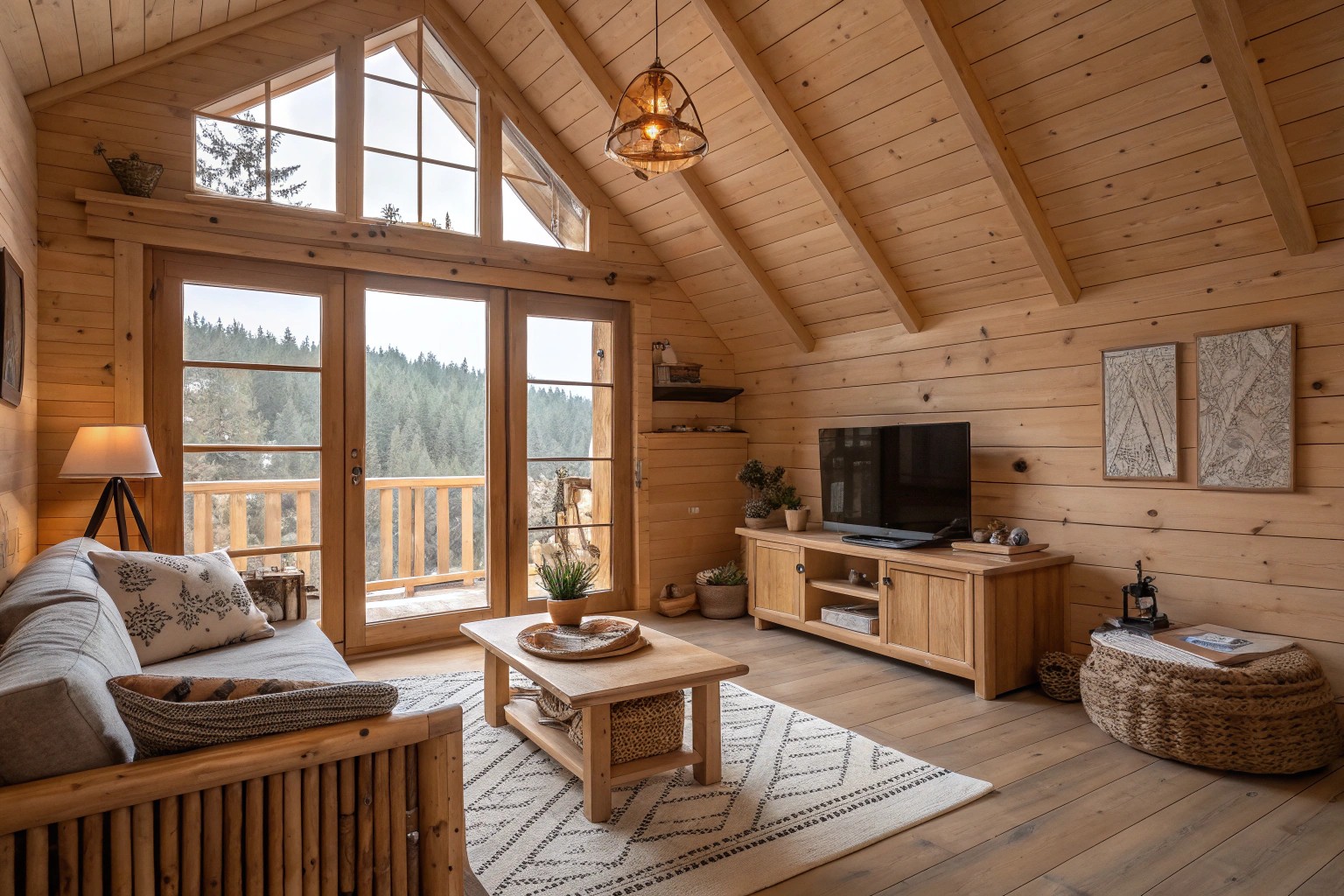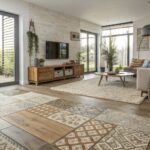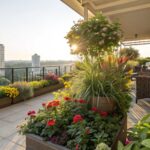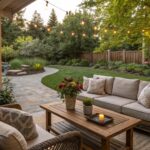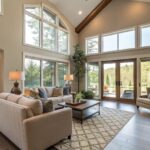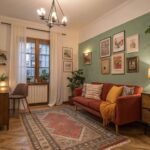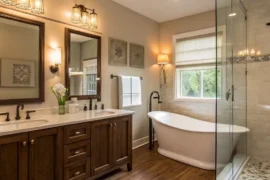In a world that never seems to stop buzzing, quiet design offers a thoughtful antidote to the sensory overload we experience daily. Through intentional choices in architecture, interior design, and landscaping, we can create sanctuaries that soothe our overstimulated senses and restore our depleted attention.
Understanding Quiet Design Philosophy
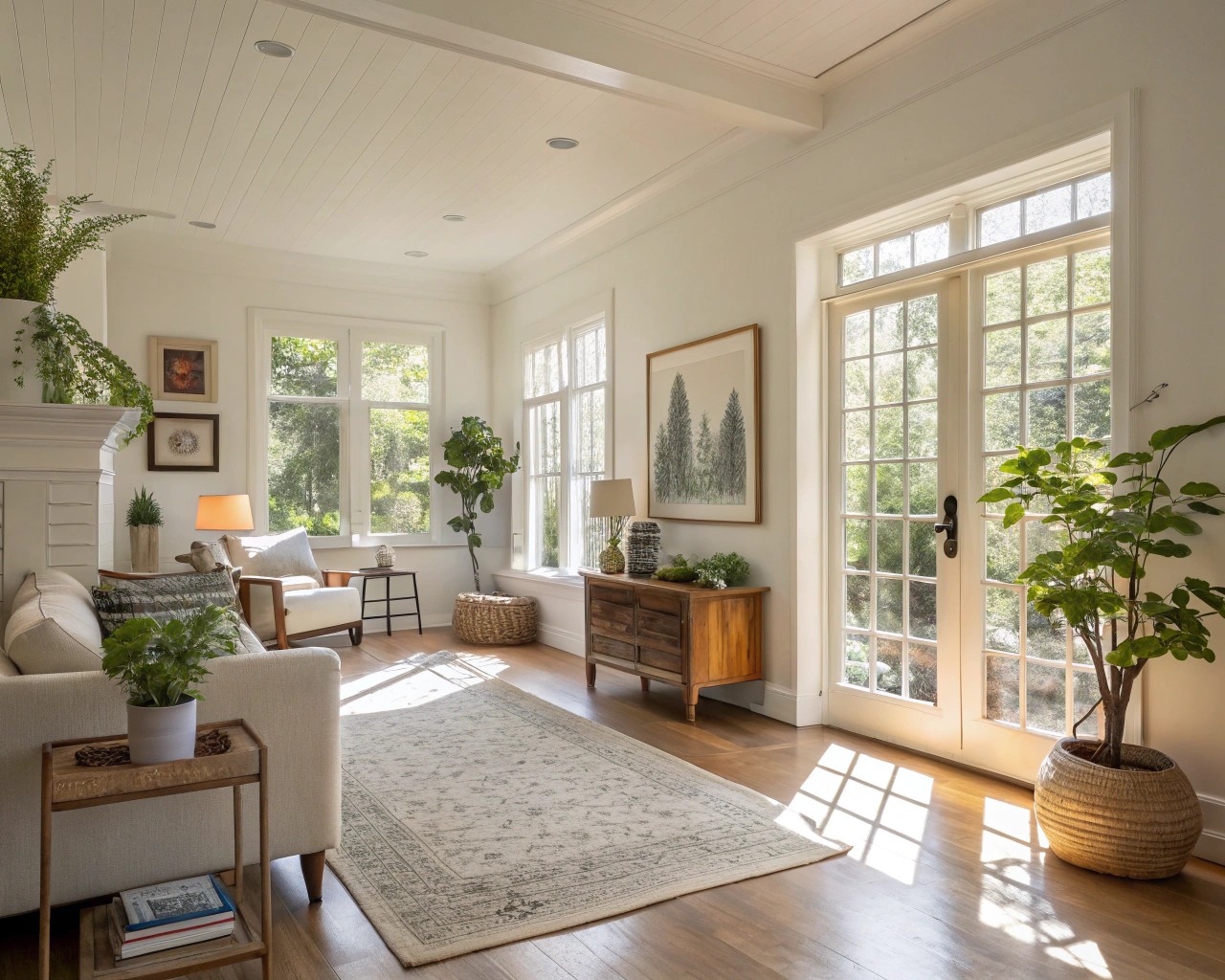
Quiet design isn’t merely about reducing decibel levels—it’s a holistic approach addressing visual, acoustic, and emotional dimensions of our environments. At its core, this philosophy recognizes that true tranquility comes from spaces that whisper rather than shout.
What began as a fashion trend has evolved into a comprehensive design movement spanning multiple disciplines. The term “quiet luxury” emerged on runways before influencing interior design, where it signifies a subtle, sophisticated form of luxury that achieves recognition through quality and restraint rather than overt display. Meanwhile, “quiet gardens” have gained popularity as people seek what many describe as a “tranquil oasis away from life’s stresses”.
In my fifteen years creating quiet spaces, I’ve observed that clients initially focus on noise reduction but soon discover that visual clutter and emotional dissonance equally impact their sense of peace. The most successful quiet designs address all three dimensions simultaneously.
| Dimension | Focus | Key Elements | Benefits |
|---|---|---|---|
| Visual Quiet | Reducing visual stimulation | Clean lines, decluttered spaces, neutral palettes | Reduced cognitive load, improved focus |
| Acoustic Quiet | Managing sound | Sound-absorbing materials, strategic layouts | Better communication, lower stress |
| Emotional Quiet | Creating psychological comfort | Natural elements, personal meaning, sensory harmony | Deeper relaxation, enhanced wellbeing |
Interior Quiet: The Foundations of Tranquil Living Spaces
Embracing Quiet Luxury in Interiors
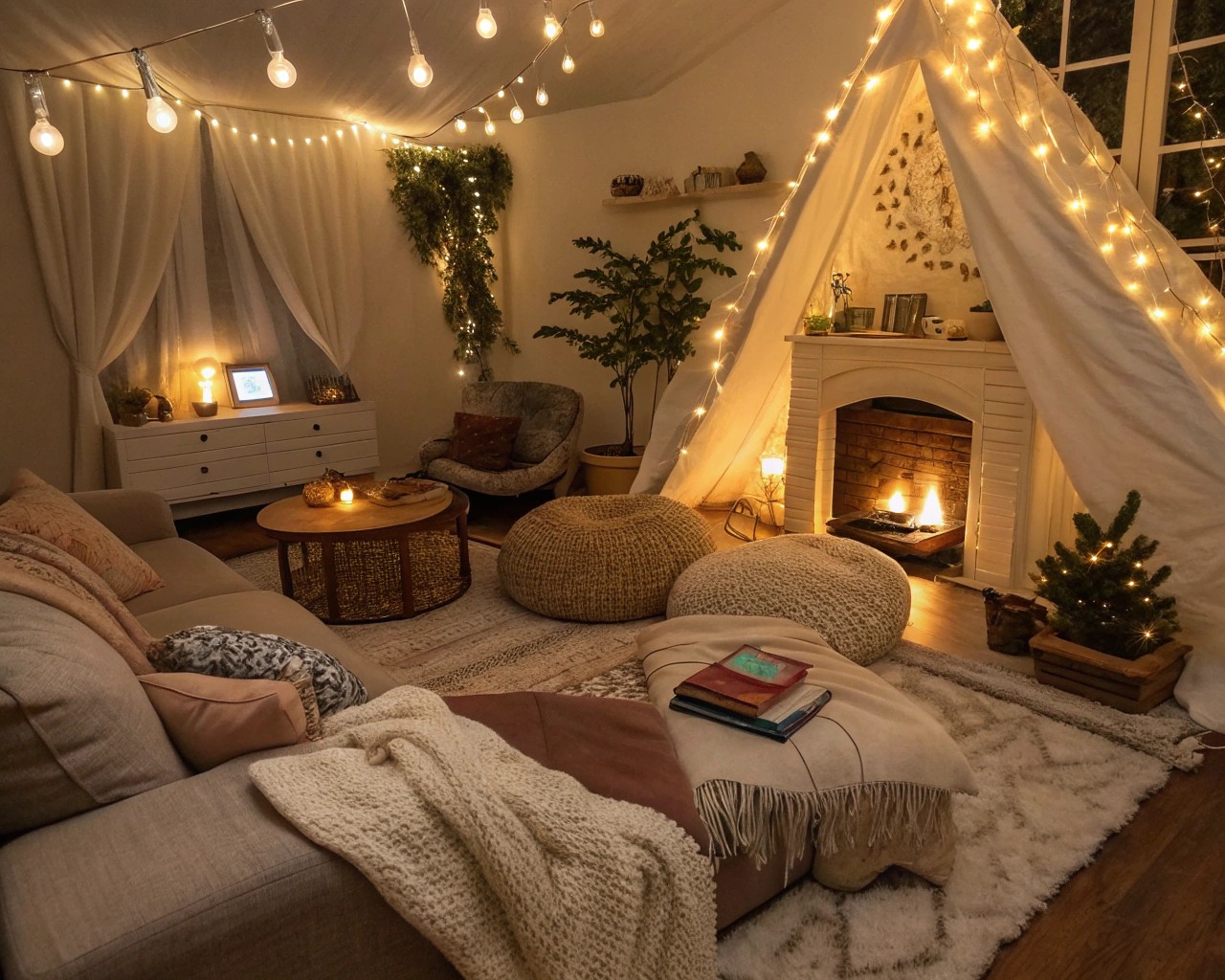
The quiet luxury trend celebrates understated elegance, prioritizing quality over quantity and craftsmanship over brand names. This aesthetic relies on several key principles that together create spaces of subtle sophistication.
When clients ask me how to achieve this look, I recommend focusing on these essential elements:
- Choose natural, high-quality materials: Opt for wood, stone, marble, and natural fibers that connect spaces to the earth and stand the test of time
- Embrace neutral color palettes: Select soft, muted tones—off-whites, creams, grays, and earth tones—that create a calming visual backdrop
- Prioritize comfort: Select furniture that offers genuine comfort without sacrificing style; deep-seated sofas and plush armchairs invite relaxation
- Maximize natural light: Use minimal window treatments to allow sunlight to flood your spaces naturally
- Incorporate living elements: Add indoor plants to bring nature inside and add vibrancy to neutral spaces
- Conceal technology: Integrate modern conveniences discreetly so they don’t disrupt the serene atmosphere
- Practice restraint: Remember that in quiet design, less truly is more—allowing rooms to breathe creates a sense of calm
Maria, a Boston-based designer specializing in quiet luxury, observes that clients feel more relaxed and focused in spaces designed with fewer, higher-quality items. She suggests this approach minimizes the constant mental effort needed to process visual clutter.
Creating Acoustic Comfort
Managing sound is perhaps the most technical aspect of quiet design, yet it needn’t require complex engineering. We can dramatically improve acoustic comfort through thoughtful material selection and placement.
For transforming echoey spaces, consider these effective strategies:
Layered Rugs: Place large area rugs in high-traffic areas, preferably made from wool or high-pile materials that excel at absorbing sound waves. For maximum effectiveness, consider layering rugs of different textures and densities.
Wall Treatments: Break up sound reflection with fabric wall hangings, tapestries, or textile art. These not only absorb sound but add visual interest and warmth to your space.
Soft Furnishings: Incorporate plush upholstered furniture, cushions, and throws throughout your space. These elements create both physical comfort and acoustic absorption.
Window Treatments: Install heavy curtains or drapes, especially in rooms facing busy streets. Thick, lined fabrics significantly reduce noise transmission from outside while absorbing sound within the room.
Strategic Plant Placement: Position plants with large, broad leaves in corners where sound tends to bounce. Beyond their acoustic benefits, plants improve air quality and connect interiors to nature.
A recent client living in a converted industrial loft struggled with the harsh acoustics of concrete floors and exposed brick walls. We transformed the space by installing microperforated wood panels that resembled architectural features rather than obvious acoustic treatments. The panels, combined with strategic textile layering and plant placement, created an environment that felt as good acoustically as it looked visually.
| Material | Sound Absorption | Visual Appeal | Best Applications |
|---|---|---|---|
| Wool textiles | Excellent | Warm, luxurious | Rugs, upholstery, wall hangings |
| Microperforated wood | Very good | Modern, architectural | Wall and ceiling treatments |
| Cork | Good | Organic, textural | Flooring, wall panels |
| Heavy velvet | Very good | Rich, traditional | Drapery, upholstery |
| Acoustic plaster | Good | Minimal, contemporary | Ceiling treatments |
| Living plants | Moderate | Natural, vibrant | Corner placements, room dividers |
Outdoor Quiet: Designing Tranquil Gardens and Landscapes
The principles of quiet design extend beautifully to outdoor spaces, where we face different challenges but seek the same goals: creating environments that restore rather than deplete.
The Quiet Garden Movement
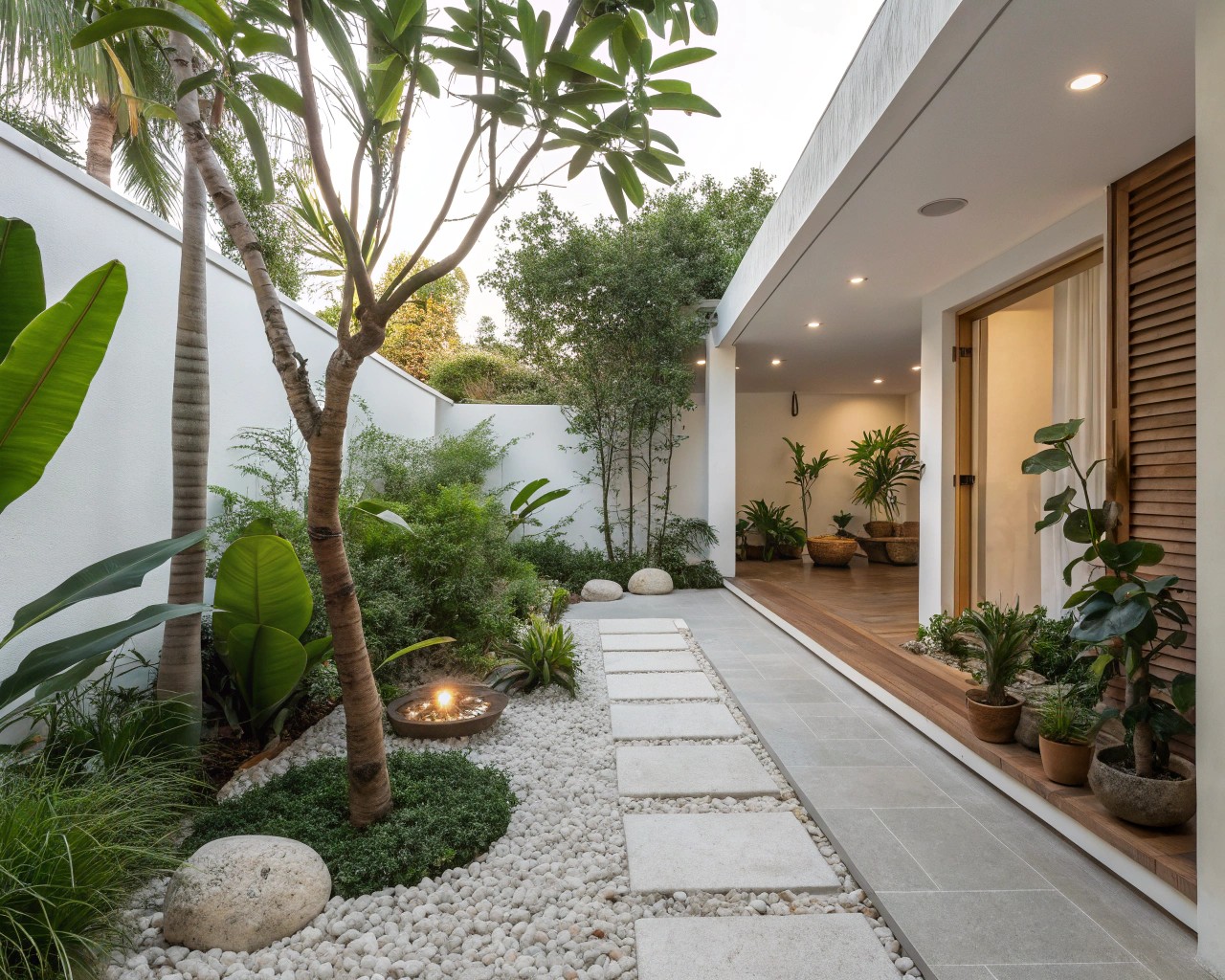
Quiet gardens represent a growing trend in landscape design focused on creating multi-sensory experiences that offer escape from urban noise and visual chaos. These gardens feature soft aesthetics with minimal hard lines, creating what feels like a separate room enclosed by greenery.
When designing quiet gardens for clients in noisy urban settings, we focus on several key strategies:
Vertical Sound Barriers: Implement tall, dense plantings that block unwanted noise. I recommend thinking about the entire vertical space, using upright trees and grasses as the tallest layer, shrubs as the middle layer, and ground covers as the bottom layer.
Sound-Masking Water Features: Incorporate gentle water elements that produce pleasant sounds to mask unwanted noise. Position these between primary noise sources and seating areas for maximum effectiveness.
Gravel Pathways: Create walkways using fine gravel that produces a gentle crunching sound underfoot, adding a pleasing auditory dimension to the garden experience.
Neutral, Quiet Colors: Select plants that feature natural blues and greens rather than stimulating reds and yellows, creating a visually restful environment.
One particularly successful project involved transforming a small urban backyard surrounded by busy streets into what the clients now call their “sanctuary garden.” We created dense vertical plantings using bamboo and ornamental grasses, which not only buffer sound but create white noise when rustled by breezes. A small recirculating water feature masks traffic sounds, while strategically placed seating creates a sense of enclosure and safety.
Top Plants for Sound Buffering in Gardens
- Bamboo – Creates natural white noise when rustled by wind; forms dense screens
- Ornamental grasses (Miscanthus, Pennisetum) – Tall varieties provide movement and sound
- Evergreen shrubs (Boxwood, Holly) – Create year-round sound barriers
- Climbing vines (Ivy, Clematis) – Cover walls and fences for added sound absorption
- Broad-leaved plants – Large leaves effectively break up sound waves
- Dense conifers – Form solid walls of sound-buffering greenery
- Multi-stemmed trees – Create acoustic barriers with visual interest
- Layered perennials – Fill in gaps at lower levels for comprehensive sound barriers
James, a landscape designer specializing in urban gardens, approaches plant selection with acoustics in mind, viewing flora as “acoustic architects.” He emphasizes that each plant variety performs a unique function in shaping the soundscape of a garden.
Room-by-Room Quiet Design Strategies
Different rooms serve different functions and therefore require tailored approaches to quiet design. Here’s how we can address specific needs throughout the home:
Bedroom Sanctuaries
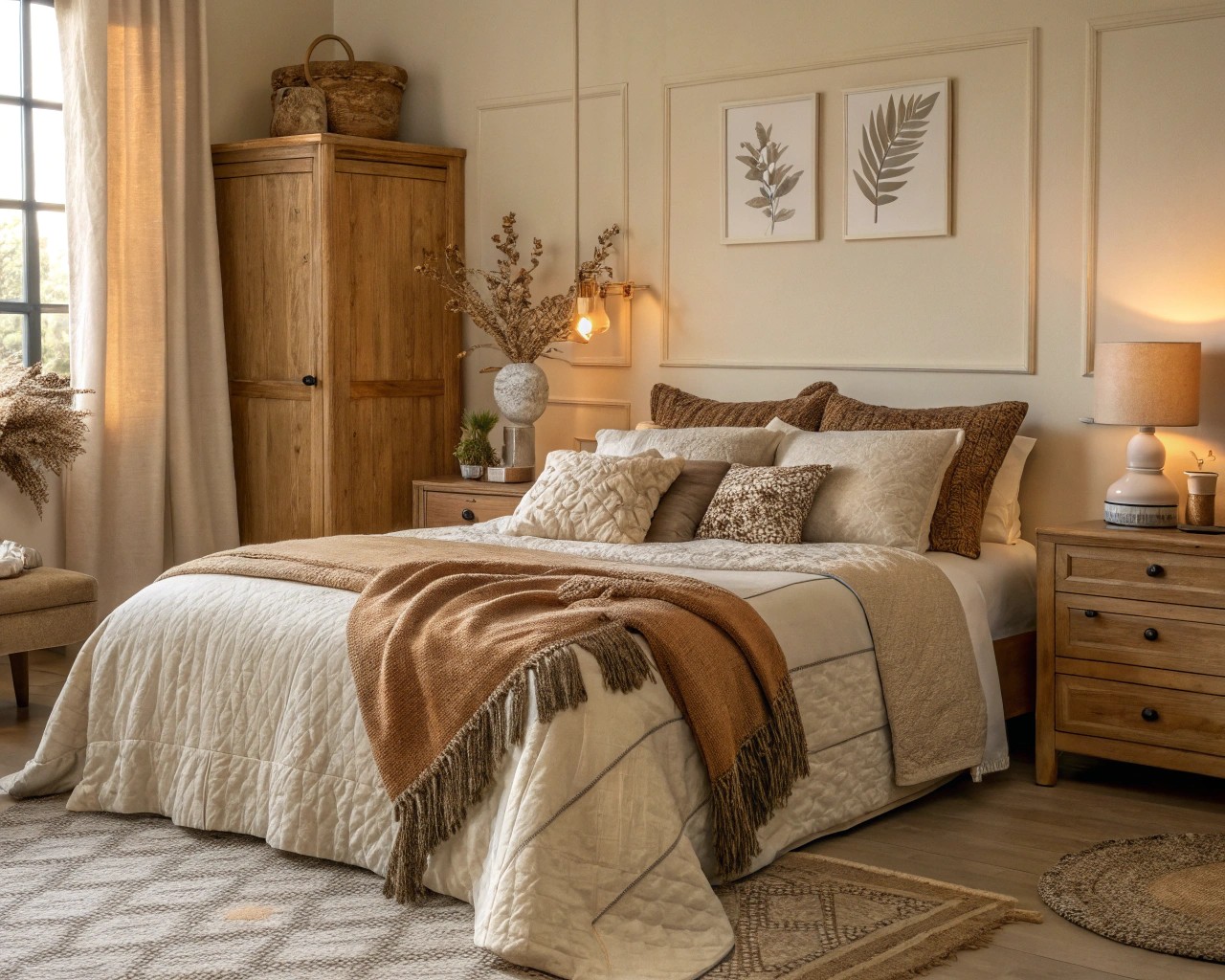
The bedroom should be your ultimate quiet zone, designed to promote deep rest and rejuvenation. Focus on creating multi-sensory comfort with:
- Acoustic textiles: Upholstered headboards, heavy drapery, layered bedding
- Sound-absorbing flooring: Area rugs on hard floors, carpet with thick padding
- Silent technology: Remove or replace noisy devices, hide necessary technology
- Natural materials: Wood furniture, organic textiles, plant life
- Color psychology: Cool blues, soft greens, neutral tones for visual quiet
I recently worked with a client suffering from insomnia who transformed her sleep quality by implementing quiet design principles. We replaced her sleek contemporary furniture with warm wood pieces, added an upholstered headboard extending to the ceiling, installed heavyweight linen drapery, and layered the bedding with natural textiles. The improvement in her sleep quality was remarkable – a powerful reminder that quiet design impacts not just our spaces but our wellbeing.
Living Areas and Work Spaces
Open-concept living areas present particular challenges for quiet design. The solution often involves creating distinct zones with different acoustic properties:
Living Rooms: Create conversation-friendly acoustics with soft seating, textile art, area rugs, and strategic furniture arrangement. Consider how sound travels through the space and position furniture to facilitate comfortable communication.
Home Offices: Focus on concentration and sound isolation with door seals, acoustic panels that double as decorative elements, organization systems that minimize visual distractions, and noise-cancelling solutions where needed.
Kitchens and Dining Areas: Address the hard surfaces typical in these areas with textile elements where practical (cushioned seating, tablecloths, window treatments) and consider acoustic ceiling treatments that blend with architectural features.
Recommended Quiet Design Elements by Room Type
| Room | Primary Quiet Design Focus | Key Elements | Challenges to Address |
|---|---|---|---|
| Bedroom | Restorative rest | Upholstered furniture, textiles, acoustic panels | Electronic devices, hard surfaces |
| Living Room | Conversation comfort | Layered textiles, strategic furniture, sound-absorbing art | Technology, multiple activities |
| Home Office | Concentration | Door seals, acoustic panels, organization systems | External noise, digital distractions |
| Kitchen | Sound dampening | Soft-close cabinets, quality appliances, ceiling treatments | Hard surfaces, appliance noise |
| Bathroom | Echo reduction | Textiles, cork flooring, quality fixtures | Hard surfaces, water sounds |
| Dining Room | Social connection | Fabric chairs, tablecloths, ceiling treatments | Hard surfaces, group acoustics |
Practical Projects for Immediate Impact
You don’t need a complete renovation to significantly improve your environment’s tranquility. Here are practical weekend projects that make an immediate difference:
Quick Transformations for a Quieter Home
- Create a textile wall – Mount a large fabric piece on your most echo-prone wall
- Implement door sweeps – Reduce sound transmission between rooms
- Add strategic plant groupings – Place large-leafed plants in corners where sound bounces
- Layer your window treatments – Combine blinds with curtains for both light control and sound absorption
- Replace hollow doors with solid ones – A significant upgrade for sound isolation
- Create a reading nook – Design a quiet corner with comfortable seating, good lighting, and acoustic protection
- Install dimmer switches – Create visual quiet through lighting control
- Organize a technology station – Designate a place where devices can be stored away from living spaces
- Add a bookcase room divider – Creates zones while adding sound absorption
- Incorporate sound-absorbing art – Install acoustic panels covered in beautiful fabrics or prints
One of my favorite recommendations for clients with basic DIY skills is creating custom acoustic panels that double as art pieces. Purchase rigid fiberglass insulation panels, build simple wooden frames, wrap them in batting and fabric of your choice, and hang them strategically on walls where sound reflection is most problematic. These panels can transform both the sound and look of a space at minimal cost.
Case Study: The Transformed Urban Apartment
Sarah and Michael approached me about their 1,200-square-foot downtown apartment with floor-to-ceiling windows and polished concrete floors. While architecturally striking, the space was acoustically challenging and felt visually chaotic with city views from every angle.
Our transformation focused on:
-
Creating visual rest – We installed simple linen drapery panels that could be adjusted to control views and light levels, immediately reducing visual stimulation.
-
Addressing acoustics – We added a large wool area rug, upholstered furniture with deep cushions, and strategically placed bookcases filled with books to absorb sound.
-
Establishing zones – Using furniture groupings and a living plant wall, we created distinct areas for different activities, each with appropriate acoustic properties.
-
Incorporating nature – We added a substantial indoor plant collection, focusing on varieties with large, sound-absorbing leaves.
-
Managing technology – We designed concealed charging stations and created systems for hiding cords and devices when not in use.
The transformation was remarkable. “We didn’t realize how much the noise and visual chaos were affecting us until they were gone,” Sarah noted six months after the project. “Our home now feels like a genuine retreat from the city rather than an extension of it.”

